Ives Run COE #19, Tioga, Pennsylvania
When the days of mourning had passed, Joseph said to Pharaoh’s court, “If I have found favor in your eyes, speak to Pharaoh for me. Tell him, ‘My father made me swear an oath and said, “I am about to die; bury me in the tomb I dug for myself in the land of Canaan.” Now let me go up and bury my father; then I will return.’” Pharaoh said, “Go up and bury your father, as he made you swear to do.” ~ Genesis 50:4-6 I found it interesting that Joseph doesn’t appeal to Pharaoh directly. Wouldn’t you think since Pharaoh made him second in command of all Egypt that he’d have direct access to Pharaoh? I find myself wondering how deep racism runs here? Joseph is a Hebrew living as a slave in an Egyptian country with Egyptian people and Egyptian rulers, and we already know that despite Joseph’s position, when his brothers showed up and Joseph invited them to stay for dinner, the Egyptians wouldn’t eat with them. People today aren’t the first to be confronted with racism. We’ve all faced discrimination at one time or another, in some way, shape or form. The hard part is living with it and loving in spite of it. God’s Way. And isn’t it wonderful that, even though Joseph is still a slave to Pharaoh (lest we forget), he’s willing to let Joseph take a minimum 418-mile, 20-day journey outside of Egyptian territory. By the way, those are one-way statistics. I’m gonna guess he and his brothers didn’t go alone.

When you look at our pictures from today, I want you to imagine two things:
- Imagine 100 years ago and zero trees anywhere, just a few stumps.
2. Imagine 2 months from now, and all the Fall colors!
If you’re like me, imagining the first one is a whole lot more difficult to imagine than the second. And yet, that’s what every place we’ve been to during our central Pennsylvania visit has told us! And based on the second article below, there were very few trees in all of the Commonwealth of Pennsylvania!
They call this area the Grand Canyon of Pennsylvania.
The Grand Canyon of Pennsylvania, also referred to as the Pine Creek Gorge, stretches for over 45 miles with depths of nearly 1500 feet. The dynamic topography of the PA Grand Canyon creates many scenic wonders, including steep canyon walls and waterfalls.
The PA Grand Canyon is part of the Tioga State Forest, beginning just south of Ansonia, PA, near Wellsboro. One of the most popular attractions to the canyon is the Pine Creek Rail Trail, a converted railroad bed that travels along the Pine Creek Gorge at the floor of the canyon.
USA Today cites the Pine Creek Rail Trail as one of the 10 great places to take a bike tour in the world. Because of the gentle grade, the trail offers easy pedaling, hence it can be experienced with minimal physical impact and basic biking gear. And of course it also makes for good hiking and running. ~ pacanyon.com
We’ve seen a few walkers, but no hikers or runners along the two ten-mile out and back bike rides we’ve done so far.
Today, we’re taking a hike in one of the State Parks that also encompass this area.
History of Leonard Harrison State Park
Human Influence on the Canyon
American Indians used the Pine Creek Gorge as a major travel route. Pine Creek Trail follows the same general route as the original path. Just north of the park, at Ansonia, was a seasonal hunting camp called “Big Meadow.”
The lumbering of the native white pine and later, the hemlock and assorted hardwoods, led to the settlement of the area. Each spring, logs were floated in huge rafts to mills at Williamsport. Lumber from this area helped to make Williamsport the lumber capital of the world in the 1880s. Hemlock bark was peeled and hauled to several local tanneries to turn hides into leather. By the 1900s, only a few small areas of native forest were untouched in all of Pennsylvania.
Due to the mass deforestation, massive forest fires, and unregulated hunting and trapping, the wildlife populations declined greatly in the commonwealth. White-tailed deer, beaver, and elk were reintroduced to the state in the early 1900s.
More recent additions to the canyon include the reintroduction of river otters in 1983 and fishers in the mid-1990s. Bald eagles, once an endangered species, began nesting in the gorge in the late 1980s.
Prior to being a world-class multi-use trail, Pine Creek Trail was an active railroad. The Jersey Shore, Pine Creek and Buffalo Railway Company began in 1883 by carrying timber to the sawmills in Tiadaghton, Cammal, and Slate Run. The railroad also transported coal north to New York State and vast amounts of hemlock bark to several local tanneries for use in the leather industry. By 1896, the railroad was carrying seven million tons of freight and three passenger trains on daily runs between Wellsboro Junction and Williamsport.
The railroad changed hands several times and was eventually taken over by Conrail. The last train passed through the canyon on October 7, 1988. Today, the rail line has taken on a new life as a part of the state’s extensive network of railtrails.
In 1968, 12 miles of the canyon were designated a National Natural Landmark by the U.S. Department of the Interior. In 1993, the gorge became a State Park Natural Area, which will protect it in a natural state for future generations. In 1992, Pine Creek was designated a Pennsylvania Scenic River.
Park History
Leonard Harrison State Park honors Leonard Harrison (1850-1929) of Wellsboro. Mr. Harrison was a civic-minded businessman and banker who contributed his time, energy, and finances to the betterment of his home community. Leonard Harrison State Park originally consisted of 121 acres and was called “The Lookout.”
Mr. Harrison owned and developed the area as a public picnic ground. He gave the area to the commonwealth in 1922. The park was further developed by the boys of the Civilian Conservation Corps (CCC) Camp S-155-PA Darling Run during the mid-1930s. A bronze monument to the CCC’s achievements is on the overlook. Additional lands were added to the park in the late 1940s. ~ dcnr.pa.gov
Not sure how the State Park actually works within the Tioga State Forest, but today, we decided on the Turkey Path Trail in Leonard Harrison State Park. It was supposed to be a mile long trail, down and back up a mountain slope, with the enticement being waterfalls.
Water today was pretty slim pickins.
There were plenty of caution signs at the start and even a few as we went along the 750′ descent, but it wasn’t too bad. For me, the most difficult part was ascending the numerous steps at the bottom when we were ready to head back. Once we got to the steady incline part, we didn’t have any trouble.













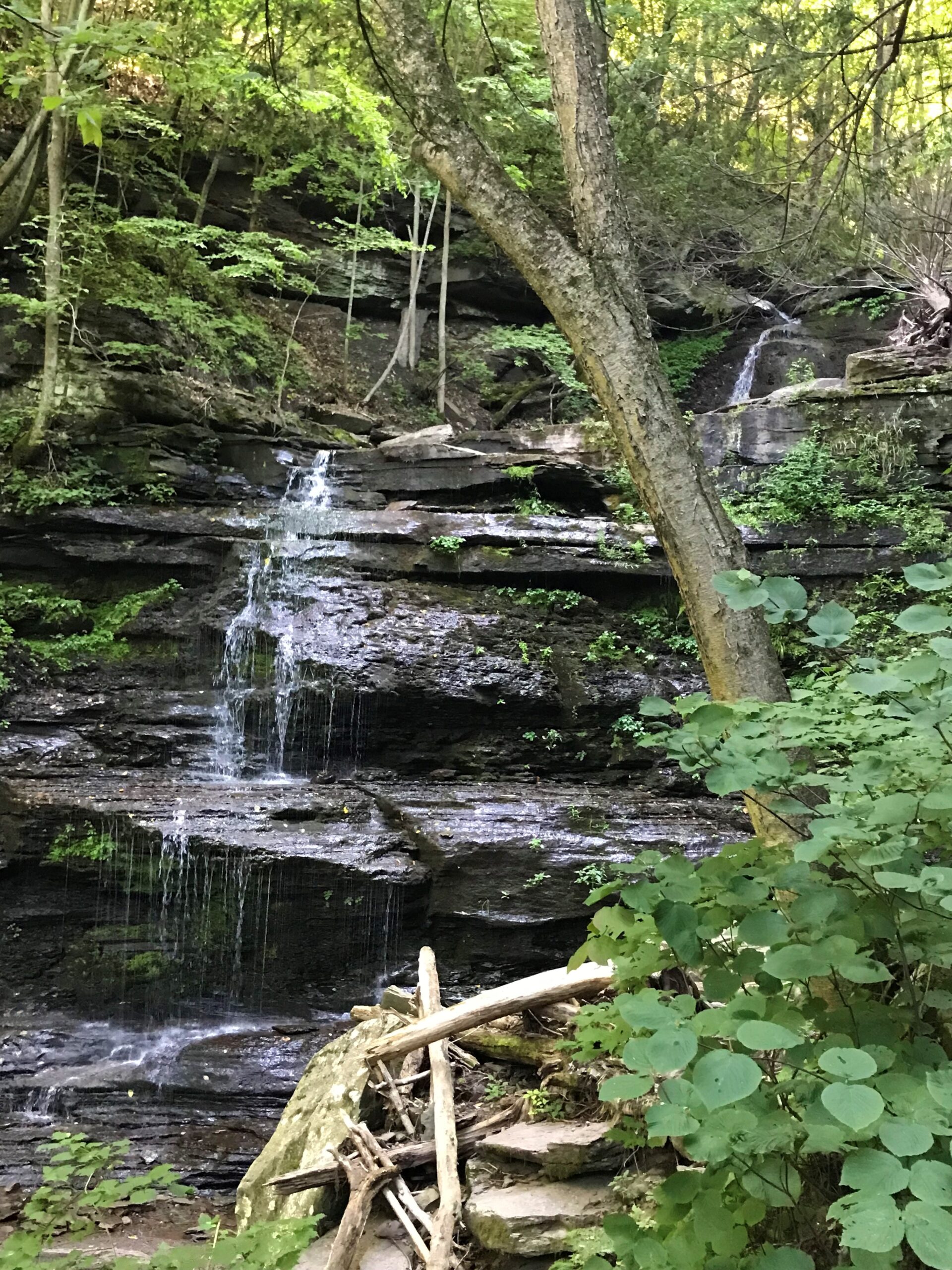
We’re down by the river now.




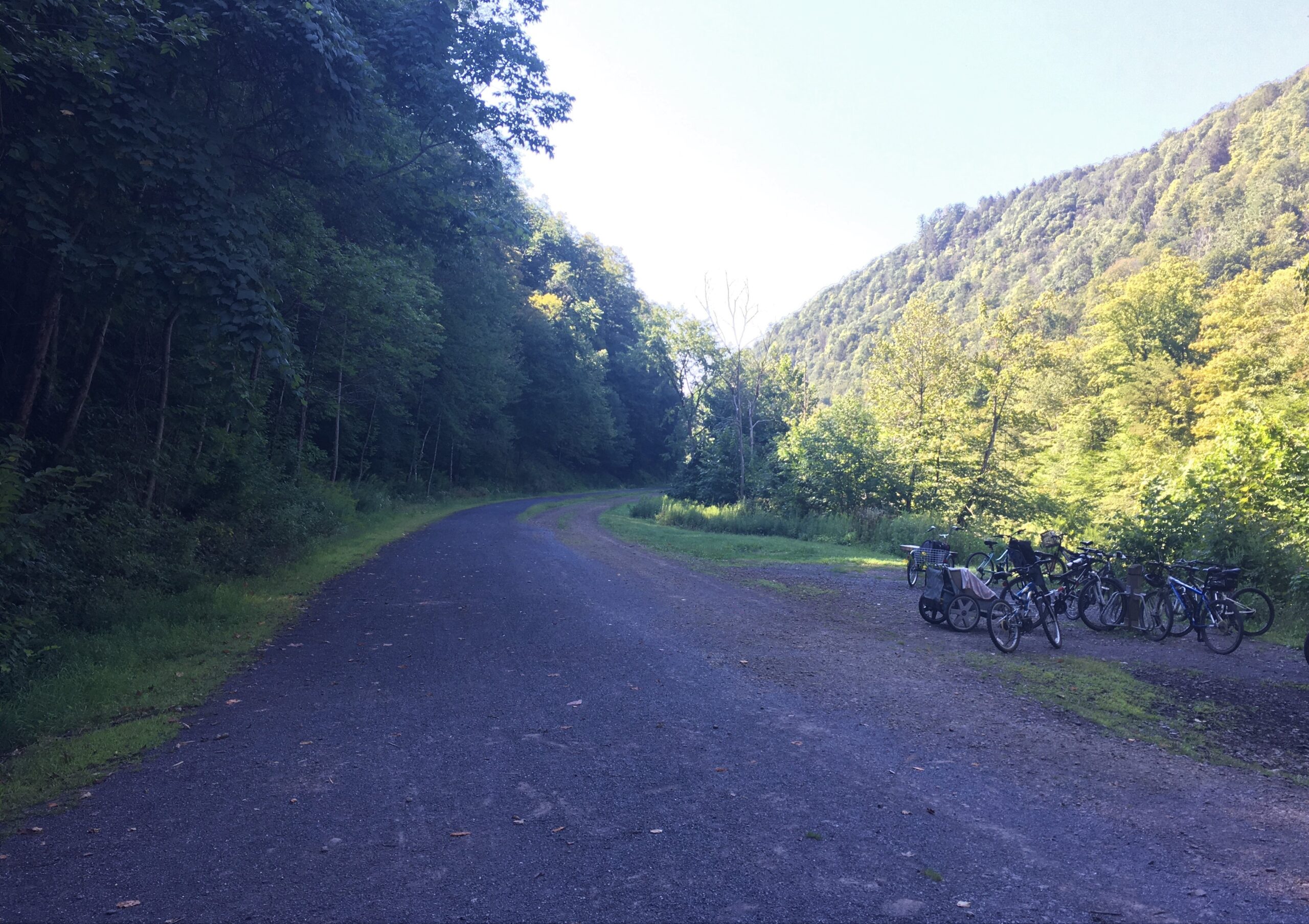

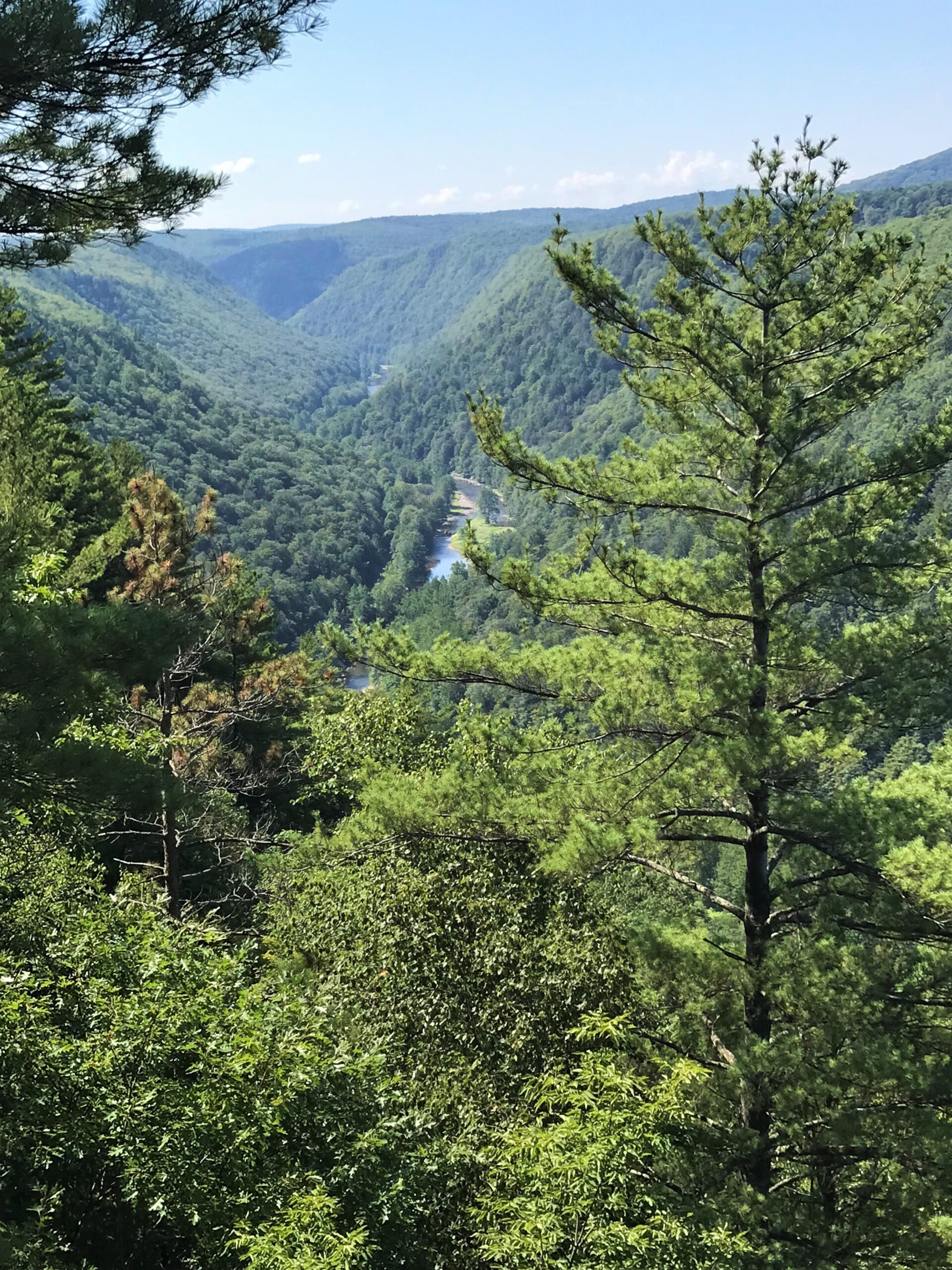

It’s a 1/2 mile loop.
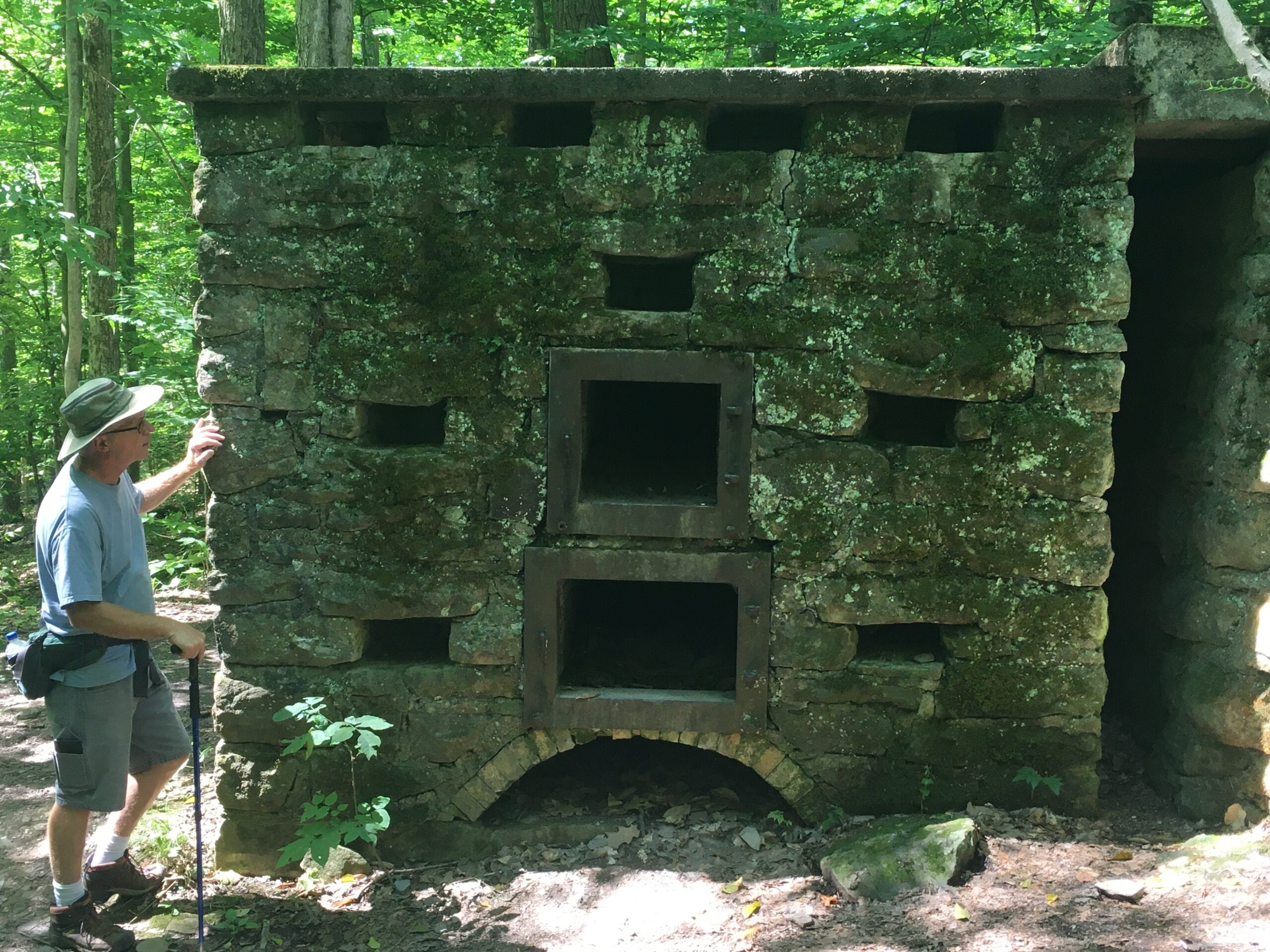

After the hike, we spent a brief amount of time in the nearby town of Wellsboro. Mostly because we needed groceries and at twenty minutes from the campground, this is the closest available.
It’s a nice little town with historic buildings and homes, as well as a small park.


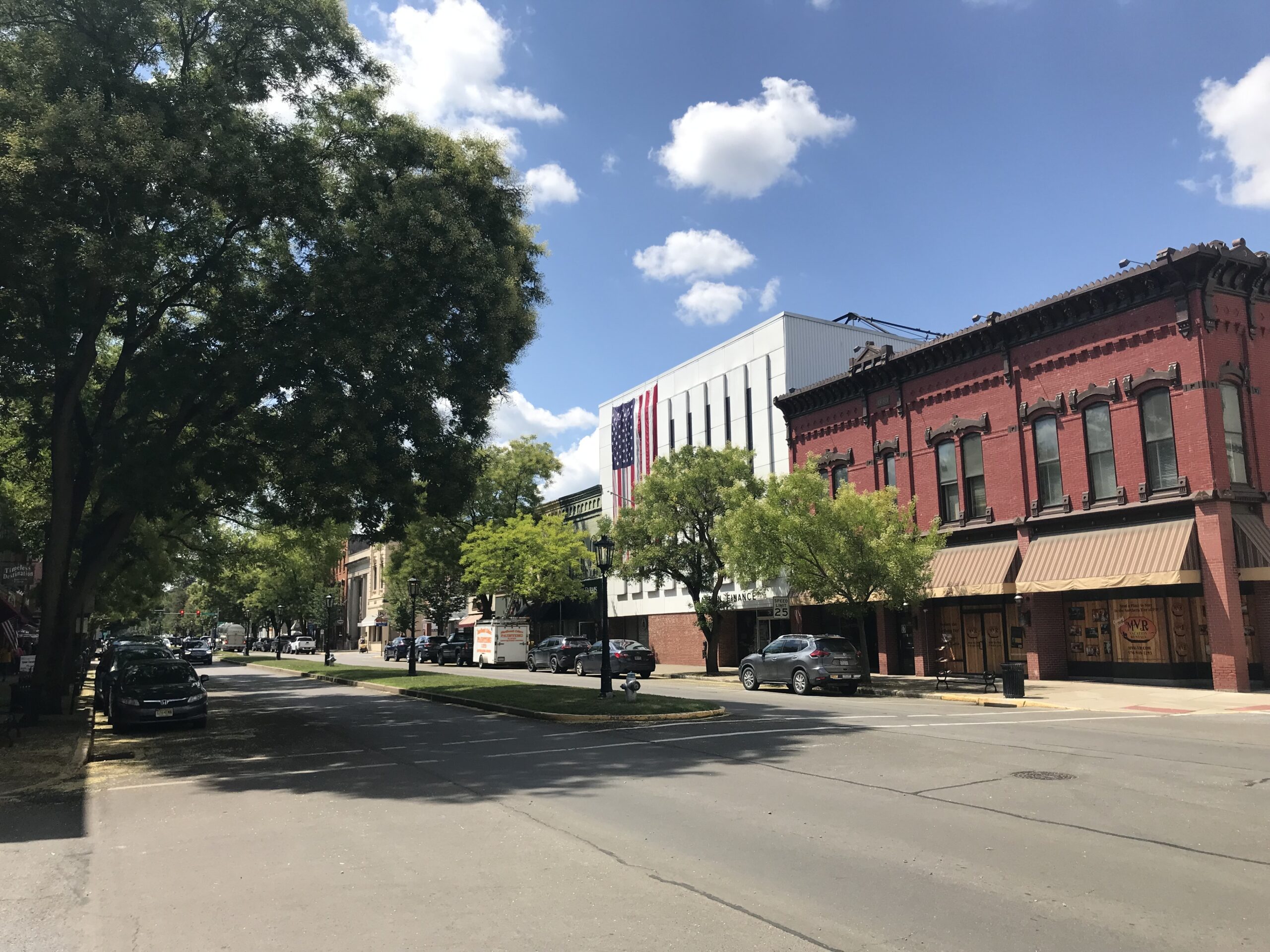



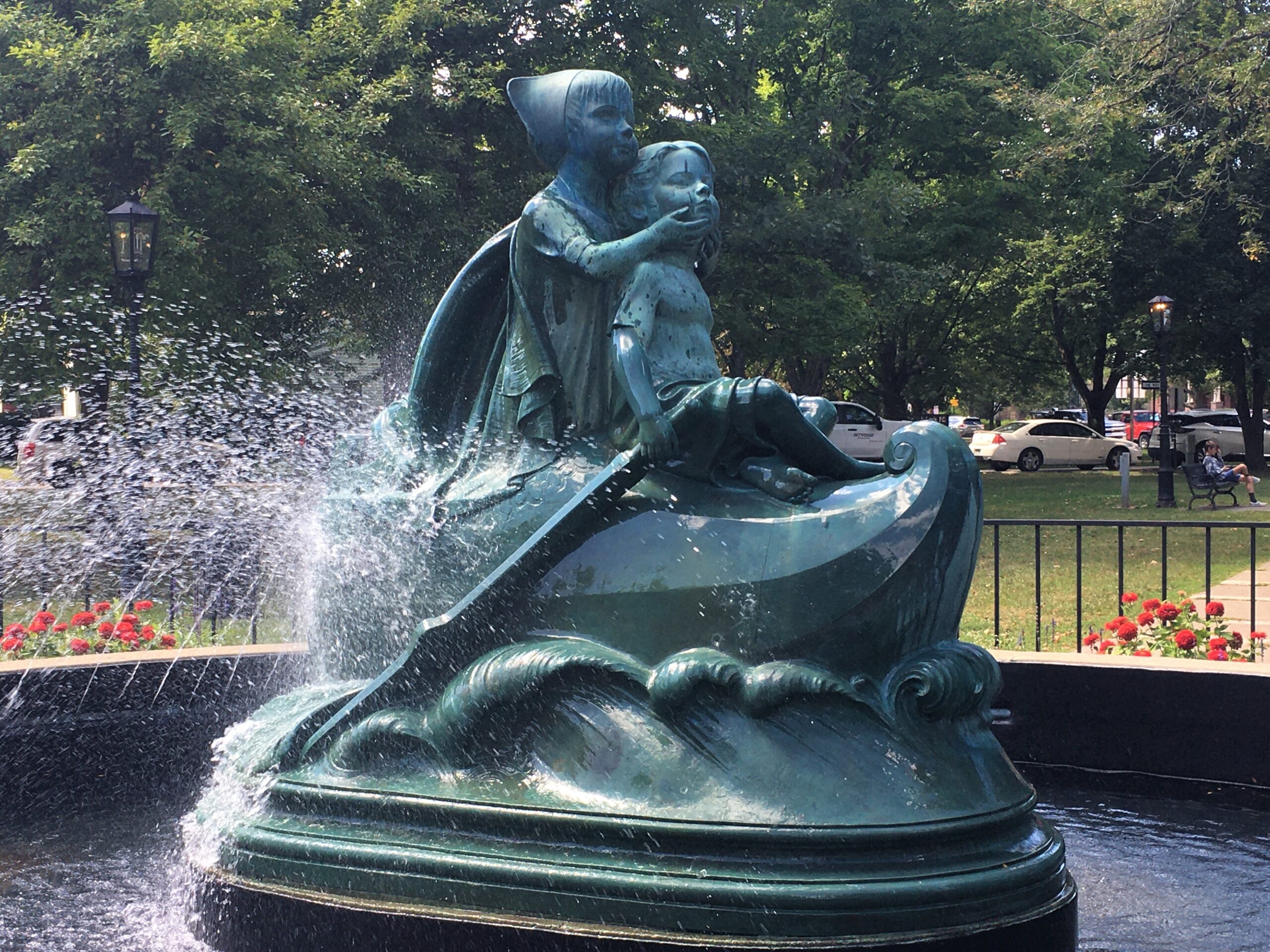

“Wynken, Blinken and Nod” was published in 1889. My mother used to read it to us from our Mother Goose book, but I only remember parts of the first and last stanza.
Tomorrow we’ll stay home and finish up the last bit of cleaning.
